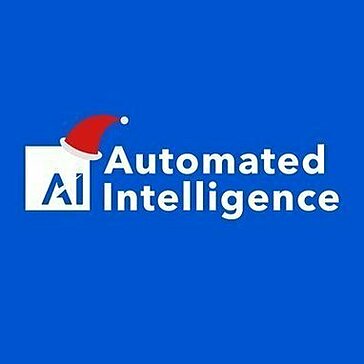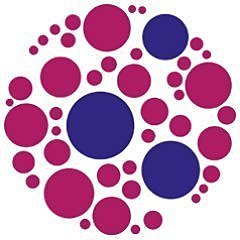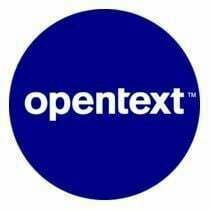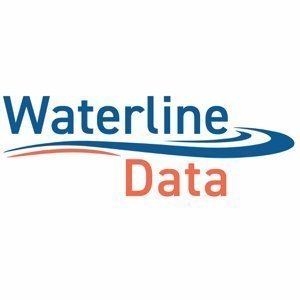4.25
Normalyze Review
Explore our Normalyze review covering security features, automation, pricing, support, and value for money. See if its updates meet your needs!
Comprehensive overview and target audience
Normalyze positions itself as a crucial platform within the cloud security landscape; specifically focusing on data security posture management across complex environments like AWS; Azure; Google Cloud and SaaS applications. It moves beyond simple infrastructure scanning; aiming to provide deep visibility into where sensitive data resides; who has access to it; and how it is being used or potentially exposed. This granular approach helps organizations understand their true data risk surface; a critical need in today’s threat environment.
The primary target audience for Normalyze includes organizations grappling with significant amounts of sensitive data spread across multiple cloud platforms. Key stakeholders typically involve:
- Chief Information Security Officers CISO seeking comprehensive data risk visibility and compliance assurance.
- Security architects and engineers designing and implementing cloud security controls.
- DevOps and CloudOps teams needing to integrate security early into development pipelines without hindering speed.
- Compliance and governance teams tasked with ensuring adherence to regulations like GDPR; CCPA; and HIPAA.
Normalyze is particularly beneficial for medium to large enterprises where manual data discovery and risk assessment become impractical or impossible.
Core Normalyze security features revolve around its ability to automatically discover; classify; and map sensitive data and associated access privileges. It identifies attack paths leading to sensitive data; prioritizes risks based on potential impact; and provides remediation guidance. The platform continuously monitors for misconfigurations; vulnerabilities; and excessive permissions that could lead to data breaches. Regular Normalyze updates and new features ensure the platform adapts to evolving cloud services and emerging threats; enhancing its detection capabilities and user experience over time. This commitment to improvement is vital in the fast changing cloud security domain.
When considering Normalyze value for money; organizations often weigh the potential cost of a data breach against the platform’s subscription fee. A detailed Normalyze pricing comparison might reveal different tiers based on data volume or connected cloud accounts; but its value proposition lies in reducing risk exposure and potentially lowering cyber insurance premiums. The platform aims to provide significant return through proactive risk mitigation and operational efficiency gains for security teams. Furthermore; comprehensive Normalyze support and training resources are available; helping teams maximize their investment and effectively utilize the platform’s full capabilities for ongoing data security management. This support structure is essential for successful adoption and long term security posture improvement.
User experience and functional capabilities
Delving into the practical application of Normalyze reveals a platform designed with both powerful functionality and user accessibility in mind. Normalyze user experience insights often highlight the clean dashboard and intuitive navigation; which helps security teams quickly grasp their data security posture across diverse cloud environments. The initial setup; while involving connecting various cloud accounts and data stores; is guided effectively. Understanding how to use Normalyze starts with this connection phase; followed by the platform’s automated discovery and classification processes. Visualizations of data lineage and access paths are particularly strong; translating complex relationships into understandable graphics.
The functional capabilities extend deep into risk assessment. Normalyze doesn’t just find sensitive data; it contextualizes the risk by identifying attack paths; excessive permissions; and associated vulnerabilities. This allows teams to prioritize remediation efforts based on actual potential impact rather than just the volume of alerts. Guidance on remediation is typically provided directly within the platform; offering actionable steps for security and DevOps teams. While comprehensive; a detailed Normalyze implementation guide and dedicated support are beneficial; especially for organizations with highly complex; sprawling multi cloud architectures; ensuring a smooth onboarding and configuration process tailored to specific needs.
Of course; no powerful platform is without potential hurdles. Common problems with Normalyze might initially involve fine tuning classification rules to minimize false positives or managing the sheer volume of insights generated in very large environments. However; the platform offers customization options to address this; and leaning on Normalyze support can help tailor the configuration. Best practices for Normalyze deployment often involve starting with critical data stores and gradually expanding scope; allowing teams to familiarize themselves with the workflows and alerts. Regularly reviewing discovered assets and access policies is crucial for maintaining accuracy.
Integrating Normalyze with other tools is a key functional strength; enhancing its value within a broader security ecosystem. It commonly connects with SIEM platforms for centralized log management and correlation; SOAR tools for automating response actions; and ticketing systems like Jira or ServiceNow to streamline remediation workflows. This interoperability ensures that Normalyze’s findings translate into efficient operational processes. Furthermore; the commitment to frequent Normalyze updates and new features means the platform continuously adapts; incorporating support for new cloud services; refining detection algorithms; and improving the user interface based on feedback; ensuring it remains effective against evolving threats and cloud technologies.
Who should be using Normalyze
Normalyze is ideally suited for organizations navigating the complexities of modern cloud environments and grappling with significant volumes of sensitive data. Specifically; medium to large enterprises find immense value; particularly those operating across multiple cloud service providers like AWS; Azure; and Google Cloud; as well as various SaaS applications. If your organization struggles with pinpointing where sensitive data resides; understanding who has access to it; and assessing the actual risk exposure across these disparate systems; Normalyze addresses these critical challenges directly.
The platform primarily serves key personnel responsible for safeguarding digital assets and ensuring regulatory adherence. These roles include:
- Chief Information Security Officers CISO who require comprehensive visibility into data risks and a reliable way to demonstrate compliance posture.
- Security Architects and Engineers tasked with designing; implementing; and verifying security controls around data in the cloud.
- DevOps and Cloud Operations teams needing to embed data security seamlessly into their workflows without sacrificing agility.
- Compliance and Governance teams responsible for enforcing policies and meeting standards like GDPR; CCPA; HIPAA; and others.
Essentially; any team whose responsibilities touch upon data security; risk management; or cloud infrastructure benefits from the insights Normalyze provides.
A typical Normalyze use case scenario involves an organization preparing for a compliance audit; needing to quickly identify all personal data locations and associated access risks. Another common scenario is a security team proactively hunting for potential data breach paths before attackers can exploit them; using Normalyze to map attack vectors to sensitive data stores. Organizations migrating workloads to the cloud or adopting new SaaS platforms also use Normalyze to ensure data security controls are correctly configured from the outset.
Adopting Normalyze effectively means embracing a proactive approach to data security. Following best practices for Normalyze involves not just deploying the tool; but integrating its findings into existing security processes. This includes regular reviews of discovered data and access policies; prioritizing remediation based on the platform’s risk scoring; and fostering collaboration between Security; DevOps; and Compliance teams. Companies committed to continuously monitoring and improving their data security posture across their entire cloud ecosystem will realize the greatest benefit from using Normalyze.
Unique Features offered by Normalyze
Normalyze distinguishes itself not just through its core data security capabilities but also through its flexibility and unique features designed to adapt to specific organizational needs. The platform offers several customization options allowing security teams to fine tune its operation for maximum relevance and efficiency within their unique cloud environments. This level of control is crucial for managing the signal to noise ratio effectively.
Key areas for customization include:
- Data Classification Rules: Teams can modify or create specific rules to accurately identify sensitive data types unique to their industry or business; minimizing false positives and ensuring focus on critical assets.
- Risk Prioritization: While Normalyze provides intelligent risk scoring; organizations can adjust parameters to align prioritization with their specific risk appetite and compliance mandates.
- Reporting and Dashboards: Users can often tailor dashboards and generate custom reports to highlight metrics most relevant to their stakeholders; from technical teams to executive leadership.
Beyond customization; Normalyze offers unique features that provide deeper insights. Its powerful attack path analysis visualizes how potential threats could reach sensitive data; moving beyond simple vulnerability lists to show actual exploitable pathways. Data lineage mapping helps understand data flow and access patterns across complex systems. Continuous monitoring ensures that the security posture is assessed in near real time; adapting to the dynamic nature of cloud infrastructure. Effectively “Integrating Normalyze with other tools” like SIEM; SOAR; and workflow platforms further enhances its value; embedding data security insights directly into existing operational processes and incident response workflows.
“Customizing Normalyze for business growth” is a practical advantage; as the platform can scale and adapt alongside an organization’s expanding cloud footprint and evolving data landscape. While Normalyze’s comprehensive feature set is primarily geared towards medium to large enterprises dealing with complex multi cloud environments; the question of “Normalyze for small businesses” arises. Although its core focus is larger scale operations; the ability to tailor certain aspects might offer value depending on the specific data security challenges and growth trajectory of a smaller; security conscious organization; especially those in highly regulated sectors. However; its primary design addresses the complexities typically found in larger enterprises.
Pain points that Normalyze will help you solve
Managing data security in today’s complex multi cloud environments presents significant challenges. Many organizations grapple with a lack of clear visibility; leaving sensitive data potentially exposed without even knowing it exists or where it resides. Normalyze directly addresses these critical blind spots and operational headaches; transforming how you approach data protection.
If you find yourself struggling with the sheer volume and dispersion of data across platforms like AWS; Azure; Google Cloud; and various SaaS applications; Normalyze offers clarity. It tackles the overwhelming task of discovering sensitive information; mapping complex access permissions; and understanding the genuine risk context. This moves security teams beyond simple alert fatigue towards focused; impact driven remediation.
Normalyze is designed to alleviate common frustrations including:
- Persistent uncertainty about where sensitive data is located and how it flows through your systems.
- Difficulty untangling complex user permissions and identifying excessive access privileges that create risk.
- Inability to visualize concrete attack paths leading to critical data assets; making prioritization difficult.
- The time consuming and often manual effort required for data discovery and classification to meet compliance mandates like GDPR or HIPAA.
- Security becoming a bottleneck for development teams due to cumbersome; slow processes.
- Scaling security controls effectively as your cloud footprint expands; a challenge directly aided by Customizing Normalyze for business growth.
- Dealing with siloed security tools that fail to provide a unified view of data risk; a problem solved by Integrating Normalyze with other tools like SIEM and SOAR platforms for streamlined workflows.
While Normalyze delivers significant value primarily for medium to large enterprises facing complex scenarios; its adaptability means that aspects of Normalyze for different businesses sizes can be relevant; particularly for security conscious smaller organizations in regulated fields. It replaces ambiguity with actionable intelligence; enabling proactive defense against data breaches and simplifying compliance adherence.
Scalability for business growth
As organizations expand their operations; their cloud footprint inevitably grows more complex and the volume of sensitive data multiplies. Normalyze is built with this trajectory in mind; offering robust scalability to ensure data security keeps pace with business development. Its architecture is designed to handle increasing demands without compromising performance or visibility; a crucial factor for companies on a growth path. Whether adding new cloud accounts; adopting more SaaS applications; or simply generating more data; Normalyze can seamlessly scale its discovery; classification; and monitoring processes.
This inherent scalability means that the platform doesn’t become a bottleneck as your infrastructure expands across AWS; Azure; Google Cloud; or other services. The ability to manage a progressively larger and more intricate environment is fundamental. This is where Customizing Normalyze for business growth becomes particularly relevant. The platform isn’t rigid; it allows adjustments to ensure that its scanning; analysis; and reporting remain efficient and pertinent even as the scale increases dramatically. You can refine policies and tailor configurations to match evolving operational realities and compliance requirements.
Key aspects of Normalyze’s scalability include:
- Seamless expansion across multiple cloud providers and numerous accounts.
- Efficient processing of ever larger volumes of data without significant performance impact.
- Adaptability to incorporate new data stores and SaaS applications into its monitoring scope.
- Flexibility through Customizing Normalyze for business scalability; allowing configurations to be optimized for larger; more complex deployments.
This focus on scalability ensures that Normalyze remains a viable and effective data security posture management solution not just for today’s needs; but as a long term strategic asset supporting sustained business growth and the associated expansion of digital infrastructure.
Final Verdict about Normalyze
Our **Final verdict on Normalyze** positions it as a powerful and necessary tool for organizations navigating the complexities of multi cloud data security. It delivers comprehensive visibility into where sensitive data resides across platforms like AWS; Azure; Google Cloud; and SaaS applications; a foundational requirement often lacking in complex environments. Normalyze moves beyond simple discovery; offering deep insights into data access; usage; and potential exposure points.
The platform excels in several key areas:
: Its automated discovery and classification capabilities significantly reduce the manual effort required for compliance adherence and risk assessment.
: The identification and visualization of attack paths leading to sensitive data provide invaluable context; allowing security teams to prioritize remediation based on actual impact.
: It effectively untangles complex permissions structures; highlighting excessive privileges that represent significant risk vectors.
Normalyze is particularly well suited for medium to large enterprises struggling with sprawling cloud footprints and stringent compliance requirements. While the user experience is generally intuitive; mastering its full potential in highly complex setups might require initial fine tuning and leveraging available support. The platform’s customization options and strong integration capabilities with tools like SIEM and SOAR platforms are significant advantages; embedding data security intelligence directly into operational workflows.
It directly addresses critical pain points: eliminating blind spots; simplifying compliance tasks; and enabling a proactive security posture. Furthermore; its proven scalability ensures it can grow alongside an organization’s expanding cloud presence. Considering its focus on deep data context; risk prioritization; and multi cloud support; Normalyze represents a robust solution for businesses seeking comprehensive data security posture management. It stands as a strong contender for companies needing granular control and visibility over their cloud data landscape.
Advantage
Disadvantage
Discover sensitive data across clouds quickly
Prioritize critical data security risks effectively
Visualize and manage data access permissions
Streamline compliance checks for regulations
Detect cloud security misconfigurations proactively
Disadvantage
Steep learning curve for advanced customization
Pricing may be high for smaller businesses
Potential for alert fatigue without proper tuning
Integration with some older systems may require effort
Can be resource-intensive during initial scans
Rating
Starter
$2500 per Year Paid Yearly
- Up to 25 data stores
- Unlimited users
- Cloud and SaaS apps
- On-prem data stores
- Data discovery classification
- Risk detection
- Access governance
- Compliance reporting
- Remediation workflows
- SIEM SOAR integrations
Product Support
Web Based
Windows
Mac OS
Linux
Android
iOS
Phone Support
Email/Help Desk
AI Chat Bot
Live Support
24/7 Support
Forum & Community
Knowledge Base
Live Online
Documentation
Videos
In Person
Webinars
Company: Normalyze Inc.
Email: info@normalyze.ai
Address:
1900 S Norfolk St Suite 350, San Mateo, CA 94403, USAPhone: Not Available
Implementation
Web Based
Windows
Mac OS
Linux
Android
iOS
Support
Phone Support
Email/Help Desk
AI Chat Bot
Live Support
24/7 Support
Forum & Community
Knowledge Base
Training
Live Online
Documentation
Videos
In Person
Webinars
Group text
Company: Normalyze Inc.
Email: info@normalyze.ai
Address:
1900 S Norfolk St Suite 350, San Mateo, CA 94403, USA
Phone: Not Available
Alternative Products
Frequently Asked Questions
What is Normalyze?
Normalyze is an agentless cloud data security platform providing comprehensive visibility and control over sensitive data residing in complex multi-cloud (AWS, Azure, GCP) and SaaS environments.
How can Normalyze help me?
Normalyze helps you prevent costly data breaches and simplify compliance by automatically discovering sensitive data, analyzing access permissions, identifying security risks (like misconfigurations or vulnerabilities), and prioritizing the most critical threats across your cloud infrastructure.
What are the key features of Normalyze?
Key features include: agentless, continuous discovery and classification of all data (including shadow data); analysis of identities, access rights, and entitlements; contextualization of vulnerabilities near sensitive data; attack path analysis visualizing potential breach routes; risk prioritization; and automated compliance mapping.
Who is Normalyze best suited for?
Normalyze is best suited for security, cloud, and compliance teams within organizations (particularly mid-size to enterprise) leveraging public cloud infrastructure (AWS, Azure, GCP), especially those operating in multi-cloud environments and needing robust data-centric security and compliance.
How does Normalyze compare to alternatives?
Compared to alternatives like native cloud provider tools or broader CSPM solutions, Normalyze differentiates with its deep data-centric approach across multi-cloud environments, excelling at correlating data sensitivity with identities, access, and vulnerabilities to provide context-rich risk assessment and attack path analysis.
Is Normalyze easy to implement and use?
Normalyze is designed for ease of implementation, utilizing an agentless approach that connects to your cloud environments via APIs, minimizing deployment friction; its user interface focuses on clear risk visualization and prioritized alerts, making it generally intuitive for security professionals.
What kind of risks does Normalyze identify?
Normalyze identifies a broad spectrum of data security risks, including: sensitive data exposure (public or internal), excessive or risky permissions, misconfigurations in data stores, vulnerabilities near critical data, insecure data residency, shadow data assets, potential compliance violations (GDPR, CCPA, HIPAA etc.), and attack paths leading to data compromise.
Is Normalyze worth it?
For organizations managing significant amounts of sensitive data in the cloud, Normalyze typically offers substantial value by proactively identifying and prioritizing critical data risks, reducing the likelihood of costly breaches, simplifying compliance, and saving security team resources, often providing a strong return on investment.






